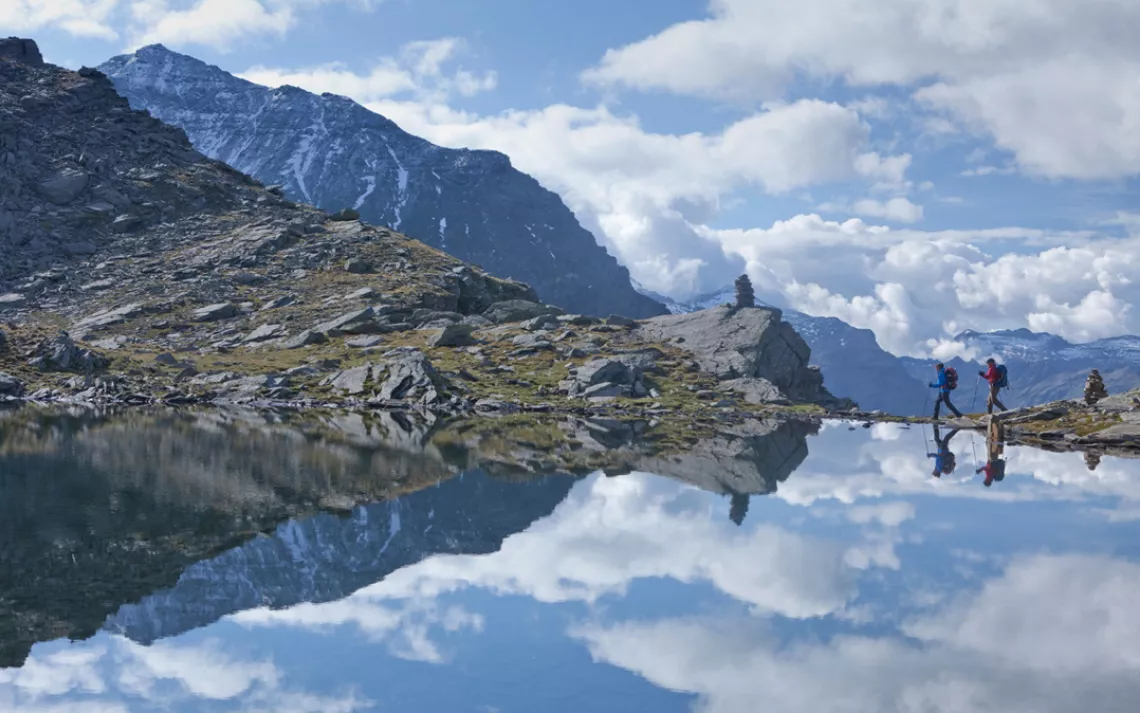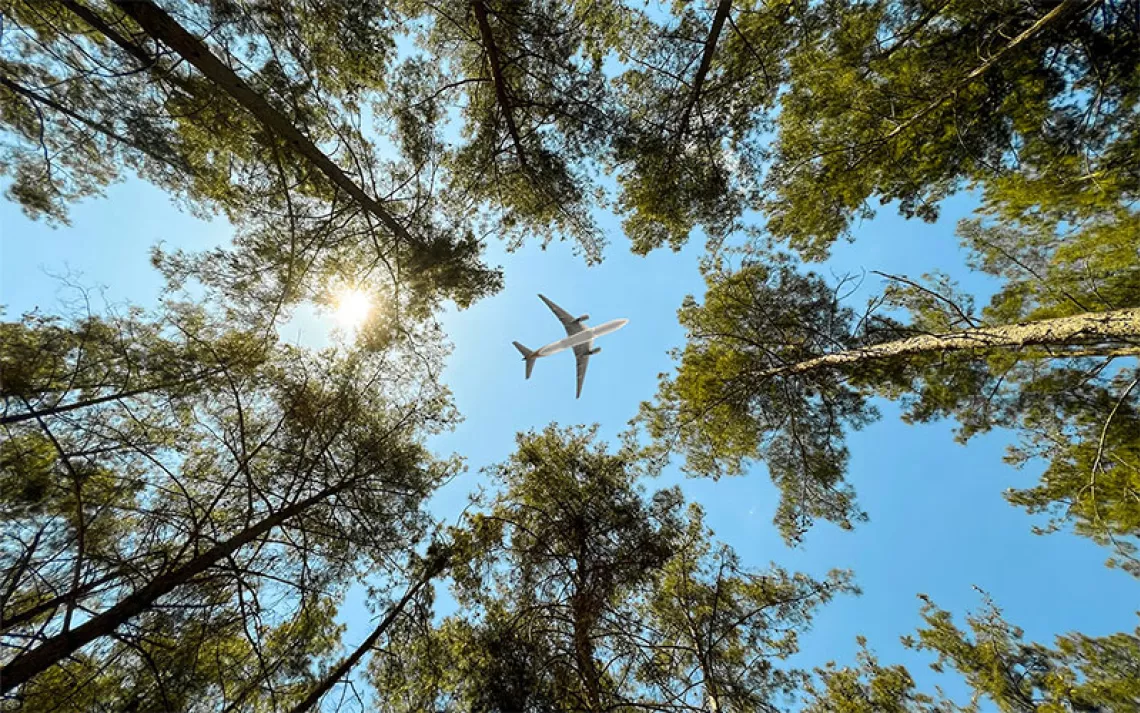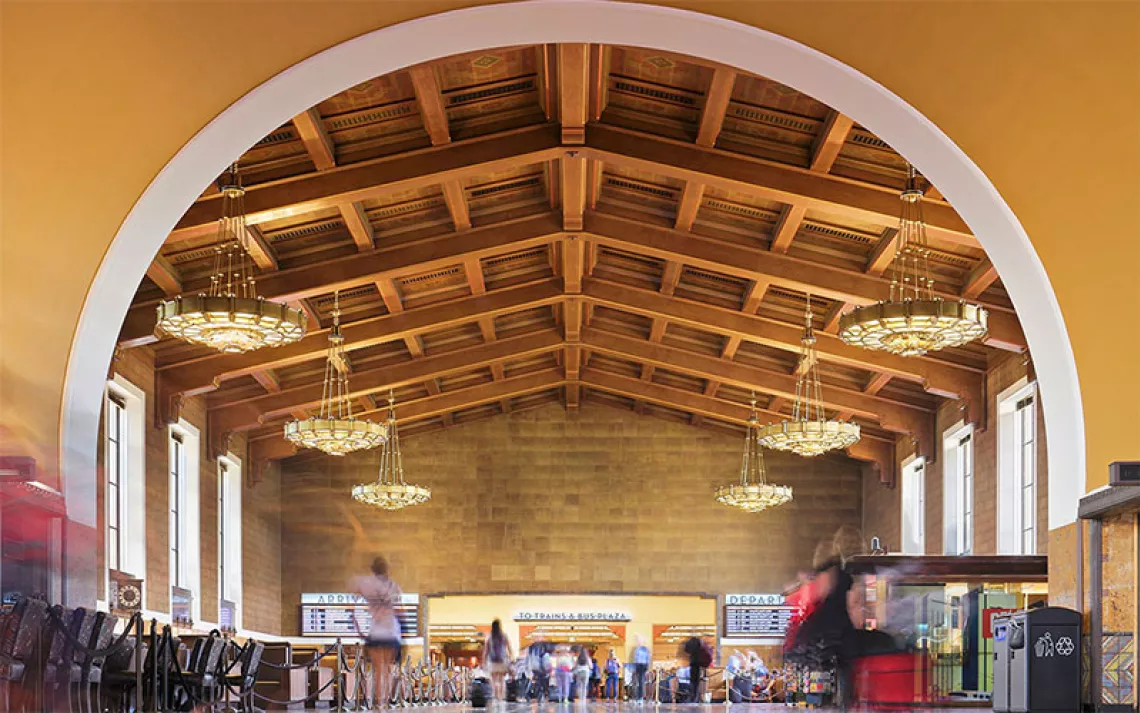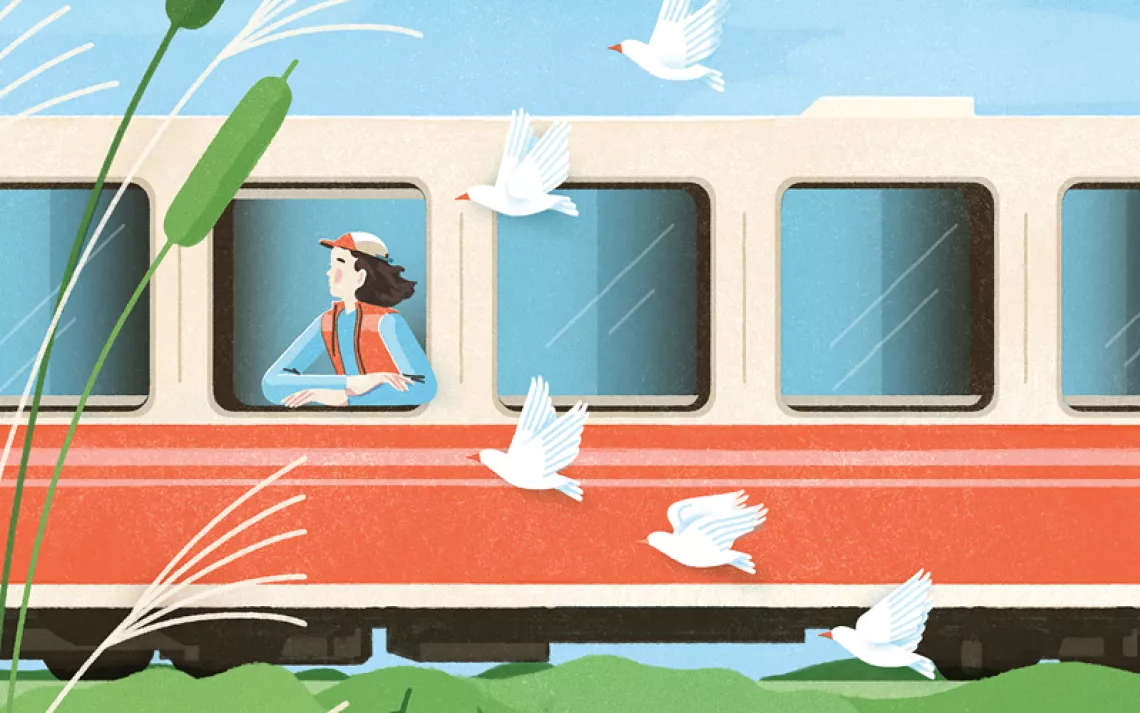Trekking in Switzerland With a Very Small Backpack
Steep trails are easier when there's a bunk and bottle of wine at the end of the day

You don't need a humongo backpack in Ticino, Switzerland. A plate of polenta, a beer, and a bunk are waiting for you. | Photo by Christof Sonderegger/Prisma Bildagentur AG/Alamy Stock Photo
When the train conductor switched from German to Italian, I knew that we must have crossed over into Ticino, Switzerland's most southerly canton. I spent that night in a grand old hotel in Lugano, which fancies itself as "Mediterranean Switzerland" and has the palm trees and azaleas to prove it. Even so, the city still runs on Swiss time: My guide, Mark Graf, promised to meet me at 9:10 the next morning and arrived not a minute early nor a minute late. I would struggle to keep up with his lanky legs for the next three days of trekking in the surrounding mountains.
Getting to those mountains is merely a matter of catching a bus from lakeside Lugano to the hilltop town of Bre, walking up its steep cobbled streets and through the small park where some gentlemen from the Balkans are roasting a pig on a spit. Soon we're in a dense beech forest on a trail so thick with duff that walking is difficult. It's a Sunday before a holiday, and we have plenty of company: romantic young couples, mountain biking codgers, and families with oddly complacent children.
Perhaps the youngsters have been bought off with the promise of ice cream at Alpe Bolla, one of the small inns that make multiday hikes here and throughout Switzerland possible with only a daypack. Just when your spirits are flagging, there's a hut serving espresso and biscotti, or perhaps polenta and a nice braised rabbit with beer.
I burn off the alcohol quickly on the slightly-too-steep hills leading up to the ragged dolomitic outcroppings known as the Denti della Vecchia, "the old woman's teeth." The standard gradient of Swiss trails is a couple notches higher than what statunitensi hikers are accustomed to. The bunk and bottle of wine at the end of each day are luxurious, but you earn them.
Virginal wilderness this ain't. Walking a ridge above the treeline on the last afternoon, I hear the whistle of wind behind me and am buzzed by a glider not 20 feet away. It banks sharply to clear the ridge, then descends lazily toward Lugano Airport. Wildlife is rare: In three days on the trail, I see only a couple of lizards and hear only a cuckoo. (Graf swears that the Swiss are innocent of the cruel joke that is the cuckoo clock, which he blames on the Bavarians.) One badly deforested area has been hopefully designated as a "marmot park," but no such rodents are to be seen.
And yet. On the last night, I stay at an agriturismo, a working farm with a couple of dormitories and an excellent selection of cheeses. Its owner had previously kept a large herd of goats—until last year, when a wolf decimated it. This isn't wilderness, but a different kind of wild.
This article appeared in the January/February 2017 edition with the headline "Backpacking with Benefits."
Take a Sierra Club trip to Switzerland. For details, go to sc.org/adventure-travel.
 The Magazine of The Sierra Club
The Magazine of The Sierra Club







